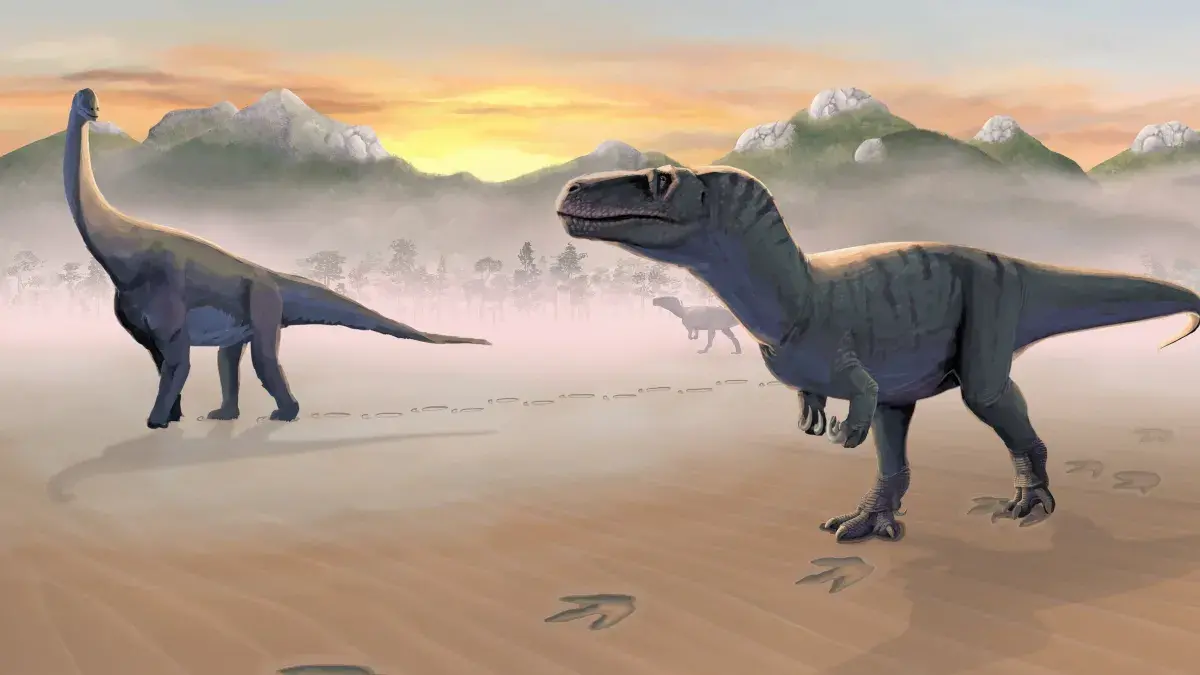The 131 footprints at Prince Charles’s Point on Skye’s Trotternish Peninsula makes the site one of Scotland’s largest and, thanks to the dominance of footprints from carnivorous megalosaurs – cousins and ancestors of T. rex – one of the rarest in the world.
Dinosaur behaviours
The discovery has given scientists invaluable insights into the environmental preferences and behaviours of dinosaurs from the Middle Jurassic period.
The site revealed footprints of plant-eating sauropods. Experts say their large, flat, circular impressions suggest they were made by a long-necked dinosaur two or three times the size of an elephant. The footprints were once considered by geologists to be resting burrows of fish.
The area is also rich with footprints from jeep-sized megalosaurs, evidence of which from the Middle Jurassic period is scarce, experts say.
Drinking companions
Analysis of the multi-directional tracks and walking gaits indicate that these dinosaurs milled around the lagoon’s margins, similar to how animals congregate around watering holes today.
The footprints suggest that, regardless of dominance, the meat-eating theropods and plant-eating sauropods habitually spent time in lagoons as opposed to exposed drier mudflats, researchers say.
Exciting discovery
The first three footprints at Prince Charles’s Point were discovered five years ago by a University of Edinburgh student and colleagues, who were visiting the shoreline.
Subsequent footprint discoveries have made the site one of the most extensive dinosaur track sites in Scotland, with scientists expecting to find more.
The research team took thousands of overlapping photographs of the entire site with a drone. Using specialist software, the team reconstructed digital 3D models of the footprints via a method called photogrammetry.
Historical site
The remote bay on the Trotternish Peninsula was also the hiding place for Bonnie Prince Charlie, who sought shelter on the shoreline on 21 June 1746 with Flora MacDonald while being pursured by British troops.
The research, published in PLOS One, was funded by the Leverhulme Trust and National Geographic Society.


